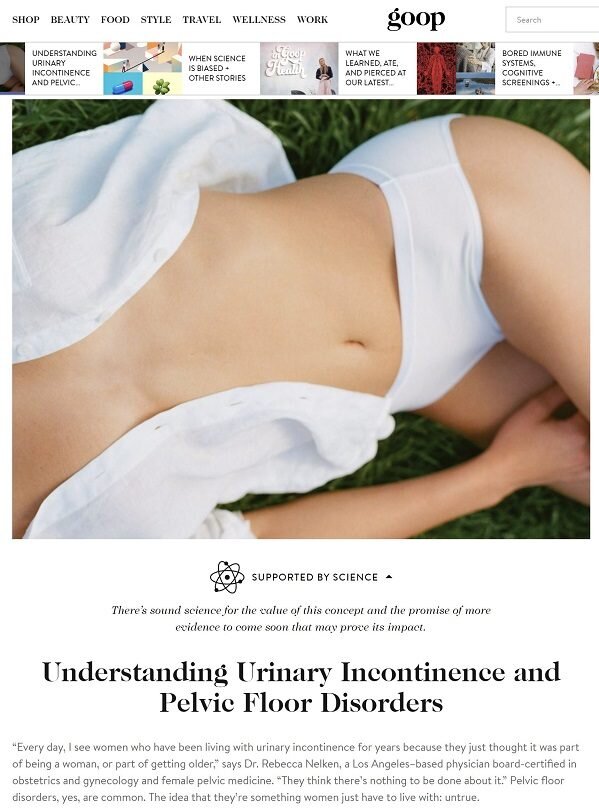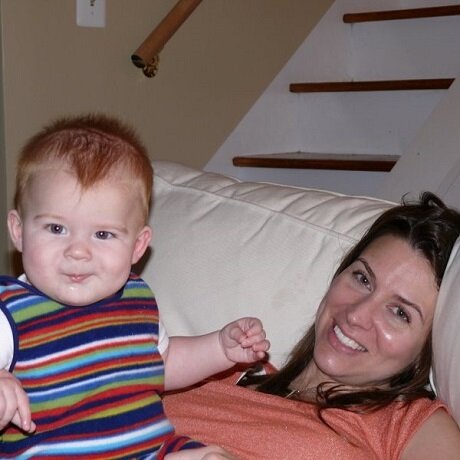We Can Do Better, Part 2: What's Happening Now
Since my We Can Do Better (WCDB) post came out last month, three things have happened:
Last week, goop came out with a feature about Pelvic Floor Dysfunctionand how we don’t have to live with it — or accept it.
The FDA approved the first-ever drug for women withsevere cases of Postpartum Depression.
I heard from hundreds of you about your own appalling birth storiesand that YOU, for the first time, were sharing as well.
At the end of WCDB, I promised an outline of evidence-based treatment for women postpartum — a basic standard of care. Before I go into that, I want to touch on the three significant events mentioned above.
1.
goop reported on pelvic dysfunction and urinary incontinence last week.
Although some of the information in their article was wrong and/or incomplete (i.e., no mention of physical therapy and that it is covered by insurance), this is good. Why is this good? We need to get the word out that women don’t have to go through life peeing when they jump, run, sneeze, or laugh, otherwise known as stress incontinence. There are evidence-based methods of treating incontinence and it’s not just by doing “Kegels.” In fact, Kegels can sometimes make incontinence worse! Pelvic floor dysfunction is not a new thing. We physical therapists, more specifically, women’s health-certified specialists, have been addressing this condition for decades. But, for some reason, addressing pelvic floor dysfunction is only slowly becoming a standard of care after childbirth. In fact, one of my lovely postpartum clients DM’d me after I raved about the goop article: “Just left my OB appointment and had to tell you how amazing they are. I told her that I am peeing when I sneeze/laugh/etc and she immediately gave me three recommendations for physical therapists.”Here was my response: “Oh, thank God! I am so glad to hear change is happening. I wish they would ask that as part of the exam, though.”What I meant by that is…we have been told to toughen up, and, as a result, lead to believe, either by our own volition or someone else’s, that urinary incontinence is “just a part of being a woman.” Well forget that! We deserve better! As part of any clinical exam, a medical professional should start including this in the patient interview or “history” taking phase of the exam. Just because we don’t mention it to our doctors, doesn’t mean incontinence doesn’t exist.
Pelvic floor dysfunction is not a new thing. We physical therapists, more specifically, women’s health-certified specialists, have been addressing this condition for decades. But, for some reason, addressing pelvic floor dysfunction is only slowly becoming a standard of care after childbirth. In fact, one of my lovely postpartum clients DM’d me after I raved about the goop article: “Just left my OB appointment and had to tell you how amazing they are. I told her that I am peeing when I sneeze/laugh/etc and she immediately gave me three recommendations for physical therapists.”Here was my response: “Oh, thank God! I am so glad to hear change is happening. I wish they would ask that as part of the exam, though.”What I meant by that is…we have been told to toughen up, and, as a result, lead to believe, either by our own volition or someone else’s, that urinary incontinence is “just a part of being a woman.” Well forget that! We deserve better! As part of any clinical exam, a medical professional should start including this in the patient interview or “history” taking phase of the exam. Just because we don’t mention it to our doctors, doesn’t mean incontinence doesn’t exist.
What’s the take-home?
You don’t have to go through life peeing on exertion. Go see a Women’s Health Physical Therapist. I like Dr. Carrie Pagliano. Find her in Arlington, schedule with her via www.carriepagliano.com. She also holds workshops with us quarterly here at Mind the Mat. We have one coming up this Saturday, April 6th: Re_ABilitate After Pregnancy. Oh, and by the way, men suffer from incontinence, too…and they don’t have to go through life with it, either. Let’s put the adult diaper companies out of business.
2.
Last week, the FDA approved the first antidepressantspecifically for Postpartum Depression.
Although this new drug is for severe cases (it’s administered via IV, requires hospitalization, and costs up to $34,000), this development will spark a new wave of innovation for the treatment of this real condition. We have started a conversation, moms! And the more we talk about it, open up about it, and admit, as a country, that postpartum depression is a medical condition and it is very common, we are on a path toward change. WE ARE FORCING THE CHANGE. Nice work!
What’s the take-home?
We aren't there yet. In the meantime, when you go back to your doctor, ask about it, even if you’re convinced you are not depressed. Tell your doctor about your symptoms. Here’s what I wish I had said to mine 12 years ago:“This is really hard. Why do people have kids? I am anxious all the time. Is that just part of parenting? I also can’t seem to get myself together or get out the door on time. I can’t even leave my house at all sometimes. Some days I can’t pull myself together to take a shower, comb my hair or even brush my teeth. I didn’t change out of my pajamas yesterday. I hate looking at myself in the mirror. I am a horrible mom. Why didn't anyone tell me it was going to be this hard? I can’t look at myself in the mirror. Did I mention that? Is this normal?”Or, do you know how that conversation could have started with my doctor?Doctor: “So how are you? How is it going with motherhood? Is it what you expected?”Had he asked those questions, I know I would have completely lost it, and he would have diagnosed me on the spot. But HE missed it.I had many doctor friends reach out to me after WCDB. Psychologists, pediatricians, PhDs, all wanting to help start a movement or to give me more information about how clinical practices have evolved since I gave birth the first time. Just writing that sentence made me pause right now. I wrote the word evolve…as if we are crawling out of the dark ages, morphing from cave people to modern-day women. And it’s only been 12 years. But truly, it’s what we are doing. We are crawling, climbing, clawing out of the depths of crappy care and into a huge revolution of innovative women’s health. I wish you could see this glowing smile and the tears streaming down my face right now.
3.
Your stories.
That Monday night that I posted a snippet of WCDB on the 'gram, my phone blew up. I had emails, texts, comments, direct messages. All of them were birth stories, stories as old as 15+ years. Many women I have known for years admitted that they’d almost died. My friends had almost died. I keep reading that sentence.
It took me several weeks to respond. I am still thinking of what to say in response to one email, it was so powerful. But I want to say thank you. Thank you for reading and thank you for sharing your own stories and forwarding mine to your friends and colleagues. Let’s keep sharing and talking. It’s powerful conversations like these that lead to change!
What to expect now and what to ask for:
Here’s the good news! In May 2018, the American College of Obstetrics and Gynecology (ACOG) released a committee opinion that redefined postpartum care standards. This new optimized standard of care acknowledged “the fourth trimester” as a time when “postpartum care should become an ongoing process, rather than a single encounter, with services and support tailored to each woman’s individual needs.” They even recommended a visit as early as three weeks instead of the old six-week standard. ACOG also recommended physical therapy as a routine standard of care, regardless of patient-reported problems such as pain or leaking. In my experience, physical therapy is a must for cesarean section scar treatment; I wish I’d had it earlier. There is much clinical evidence supporting early scar mobilization for functional improvements and short- and long-term pain reduction.
They even recommended a visit as early as three weeks instead of the old six-week standard. ACOG also recommended physical therapy as a routine standard of care, regardless of patient-reported problems such as pain or leaking. In my experience, physical therapy is a must for cesarean section scar treatment; I wish I’d had it earlier. There is much clinical evidence supporting early scar mobilization for functional improvements and short- and long-term pain reduction.
Take-Home Bullets
During your prenatal care, ask your doctor for postpartum physical therapy.
During your prenatal care, ask about the signs and symptoms of postpartum depression and ask her or him if they use a valid screening tool.
Ask for a three-week visit instead of a six-week visit, especially if you have any incisions or stitches of any kind (including vaginal or cesarean delivery).
Read these recent recommendations on optimizing postpartum care by ACOG.
Before and after baby arrives, find an exercise program providing curated and therapeutic exercises for your pregnant and postpartum body, mind, and spirit. If you are local, that is us, you can find all of our programs here. If you’re not local, I have several online programs on my website.


